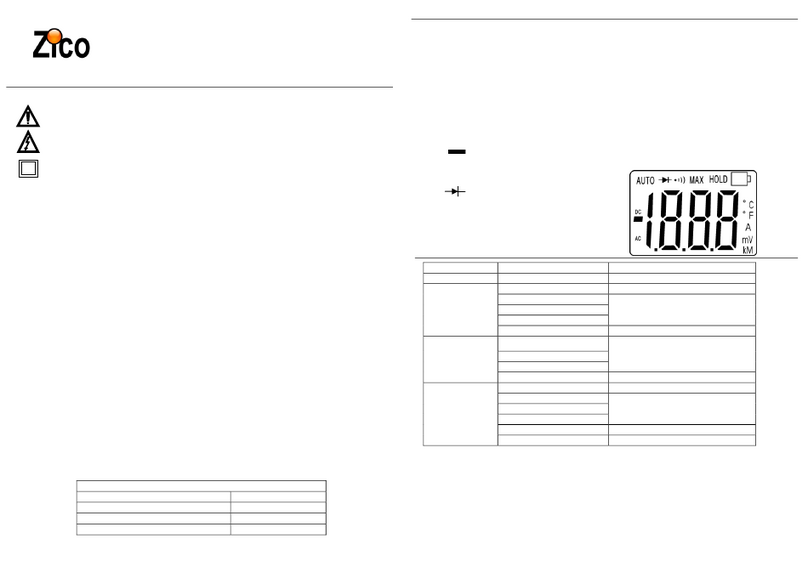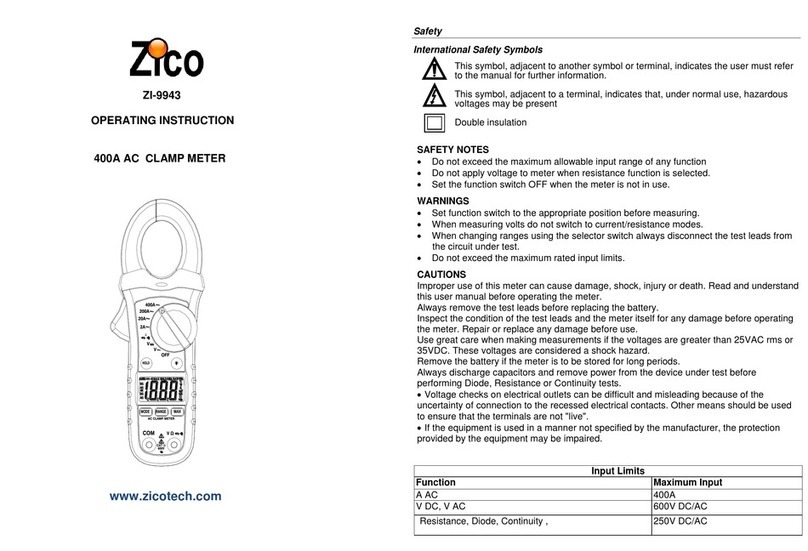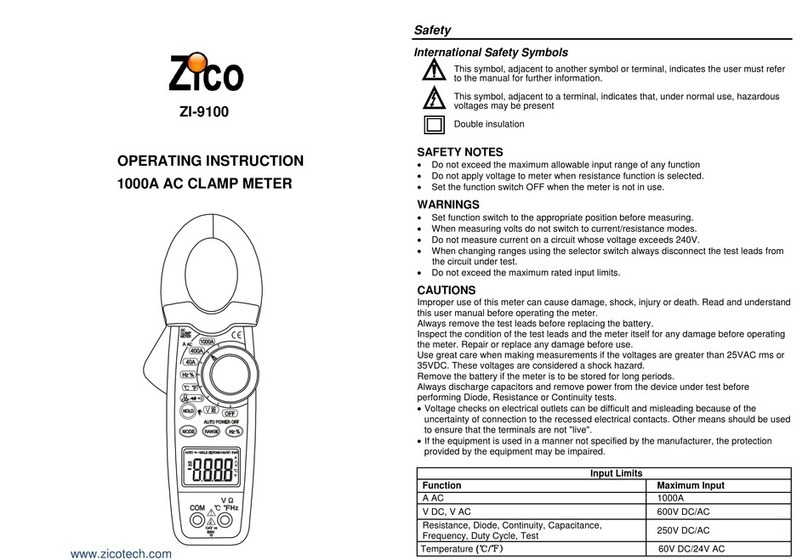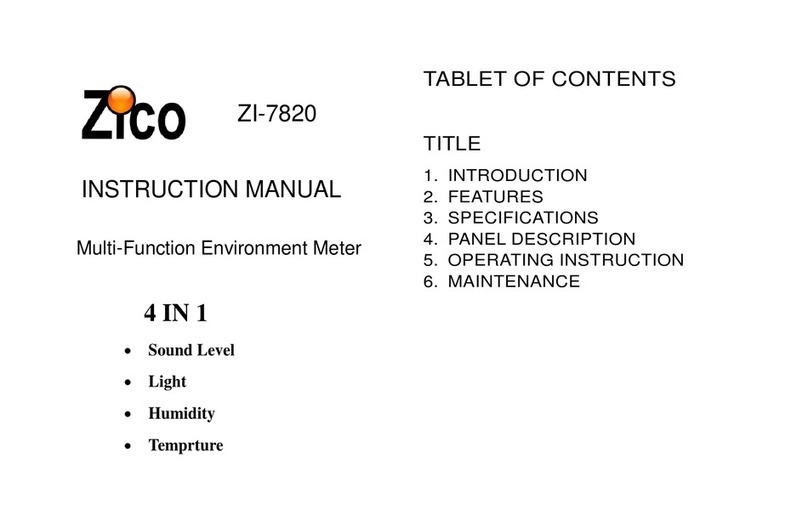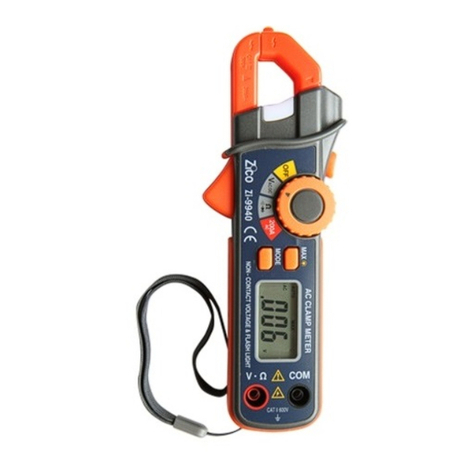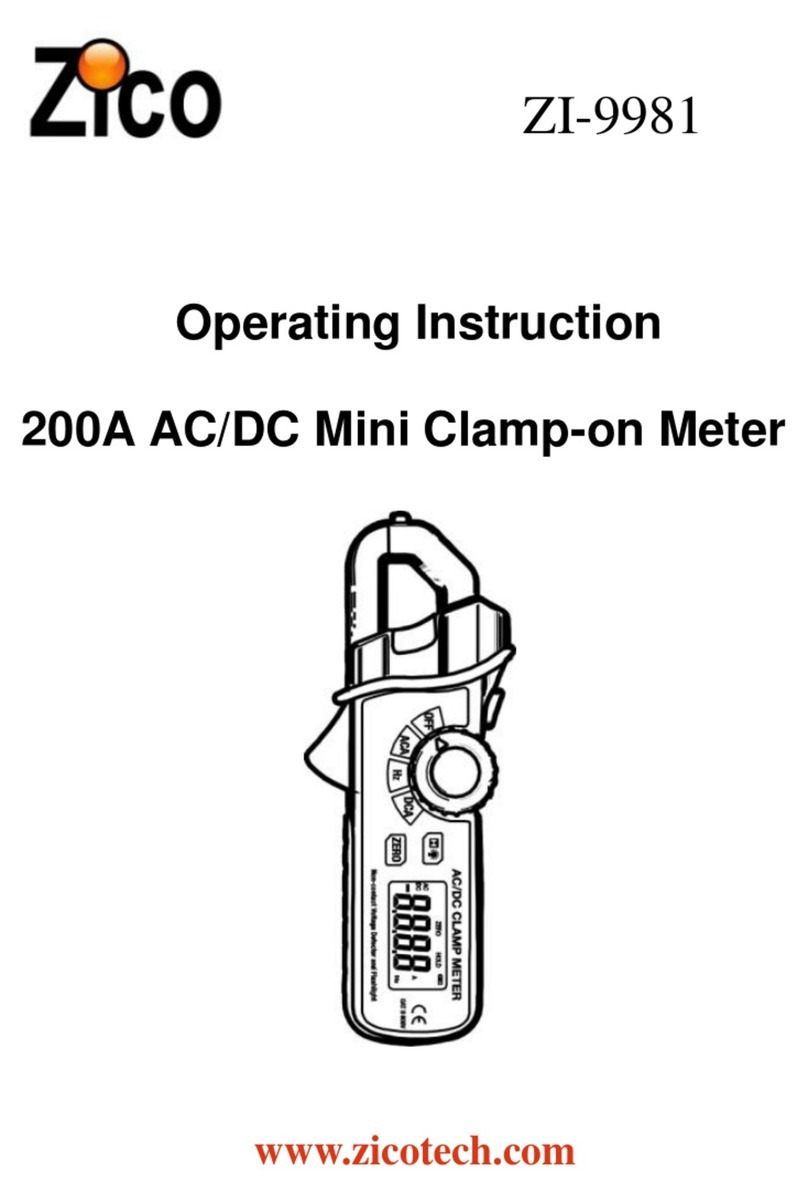
II, Pollution Degree 2. Category II includes local level,
appliance, portable equipment, etc., with transient
overvoltages less than Overvoltage Cat. III
Operation
NOTICES: Read and understand all warning and precaution statements listed in the
safety section of this operation manual prior to using this meter. Set the function
select switch to the OFF position when the meter is not in use.
AC/DC Current Measurements
WARNING: Ensure that the test leads are
disconnected from the meter before making current
clamp measurements.
1. Set the Function switch to
the 400ADC,40ADC,400AAC or40AAC range.
2. If the range of the measured is not known,
select the higher range first then move to the lower
range if necessary.
3. Press the trigger to open jaw. Fully enclose one conductor
to be measured.
The clamp meter LCD will display the reading.
AC/DC Voltage Measurements
1. Insert the black test lead into the negative COM terminal and the
red test lead into the positive Vterminal.
2. Set the function switch to the Vposition.
3. Select AC or DC with the MODE button.
4. Connect the test leads in parallel to the circuit under test.
5. Read the voltage measurement on the LCD display.
Resistance Measurements
1. Insert the black test lead into the negative COM terminal and the
red test lead into the positive terminal.
2. Set the function switch to the •))) CAP position.
3. Touch the test probe tips across the circuit or component under
test. It is best to disconnect one side of the device under test so
the rest of the circuit will not interfere with the resistance reading.
4. For Resistance tests, read the resistance on the LCD display.
Diode and Continuity Measurements
1. Insert the black test lead banana plug into the negative COM jack and the red test lead
banana plug into the positive diode jack.
2. Turn the rotary switch to the •))) CAP position.
3. Press the MODE button until “ “ appears in the display.
4. Touch the test probes to the diode under test. Forward voltage will indicate 0.4V to 0.7V.
Reverse voltage will indicate “OL”. Shorted devices will indicate near 0mV and an open
device will indicate “OL” in both polarities.
For Continuity tests, if the resistance is < 150, a tone will sound.
Capacitance Measurements
WARNING: To avoid electric shock, disconnect power to the unit under test and
discharge all capacitors before taking any capacitance measurements. Remove the
batteries and unplug the line cords.
1.Set the rotary function switch to the •))) CAP position.
2.Insert the black test lead banana plug into the negative (COM) jack.
Insert the red test lead banana plug into the positive (V) jack.
3.Touch the test leads to the capacitor to be tested.
4.Read the capacitance value in the display
Frequency or % duty cycle measurements
1. Set the rotary function switch to the “VDC/AC,Hz” position.
2. Insert the black lead banana plug into the negative COM jack and the red test lead
banana plug into the positive V jack.
3. Select Hz or % duty with the Hz/% button.
4. Touch the test probe tips to the circuit under test.
5. Read the frequency on the display.
Temperature Measurements
WARNING: To avoid electric shock, disconnect both test probes from any source of
voltage before making a temperature measurement.
1. Set the function switch to ℃℉.
2. Insert the Temperature Probe into the negative (COM) and the V jacks, making sure to
observe the correct polarity.
3. Touch the Temperature Probe head to the part whose temperature you wish to
measure. Keep the probe touching the part under test until the reading stabilizes (about 30
seconds).
4. Read the temperature in the display. The digital reading will indicate the proper decimal
point and value.
WARNING: To avoid electric shock, be sure the thermocouple has been removed before ch
anging to another measurement function
Non-ContactAC Voltage Measurements
Red Black Black Red
Probe Probe Probe Probe
Forward test Reverse test
WARNING: Risk of Electrocution. Before use,
always test the Voltage Detector on a known live
circuit to verify proper operation
















